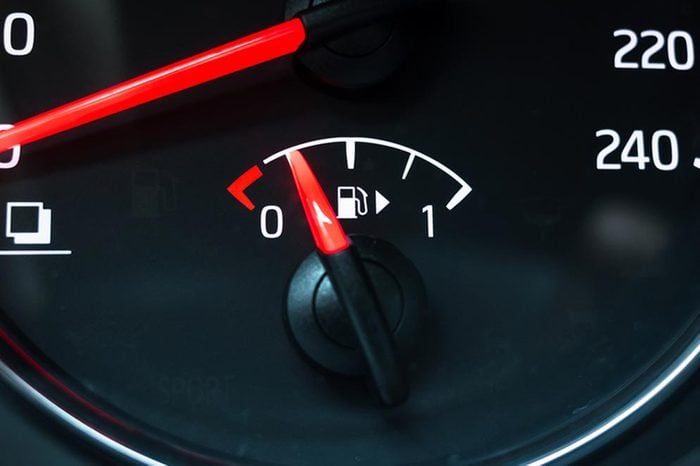
Driving on a quarter tank
Winter weather has the nasty habit of causing unexpected delays on the roads. Chevrolet’s winter driving experts warn to avoid the mistake of running on or close to empty. Keep your gas tank at least half full when driving in winter, and always have a charged cell phone in case of emergencies. Find out how to survive your car breaking down in winter.
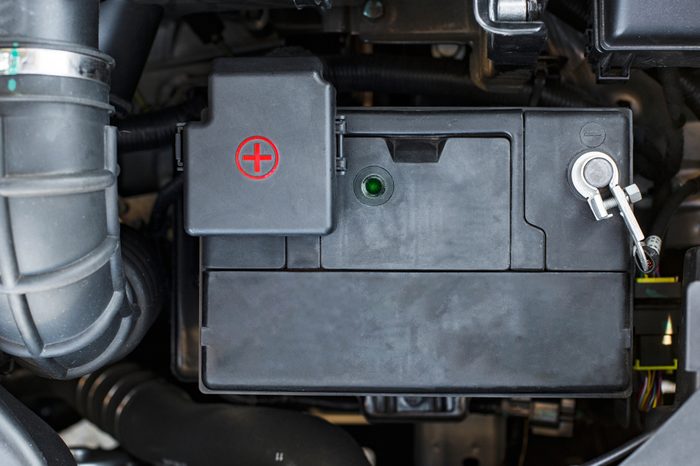
Forgetting to prep your car
Before the first (or next) blast of dangerous winter weather, have your car dealer’s service department prep your ride for winter. Doug Herbert, drag racing legend and founder of the defensive driving non-profit Put on the BRAKES (Be Responsible and Keep Everyone Safe), encourages a thorough battery check because extreme cold requires more energy to start your car. At 0° F, a car’s battery loses about 60 percent of its strength, and at 32° F, it loses 35 percent. Ask your mechanic to also check all your lights, wiper blades, fluids, and the tire pressure, which can drop along with the temperature.
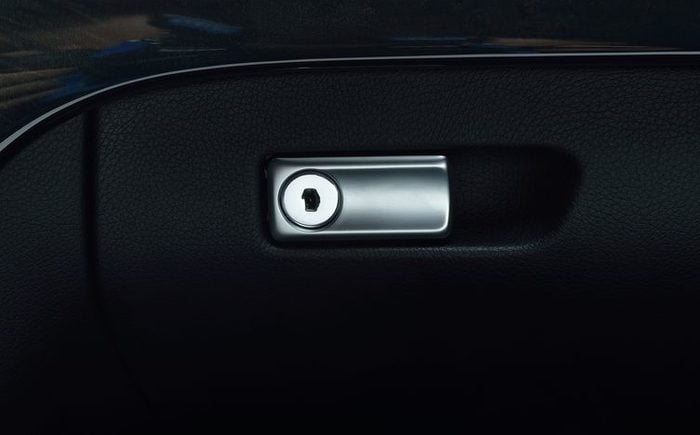
Ignoring the owner’s manual
You can keep your owner’s manual buried in your glove box when the weather is nice, but Chevy warns that brushing it aside come winter would be a mistake. Dig out that owner’s manual and brush up on your car’s anti-lock brakes, traction control system, and four- or all-wheel-drive (if equipped) to make sure you are comfortable with how it all works. Don’t have the owner’s manual? Check the smartphone app for the brand, model, and year of your car. Don’t miss these safe driving tips for scary driving situations.
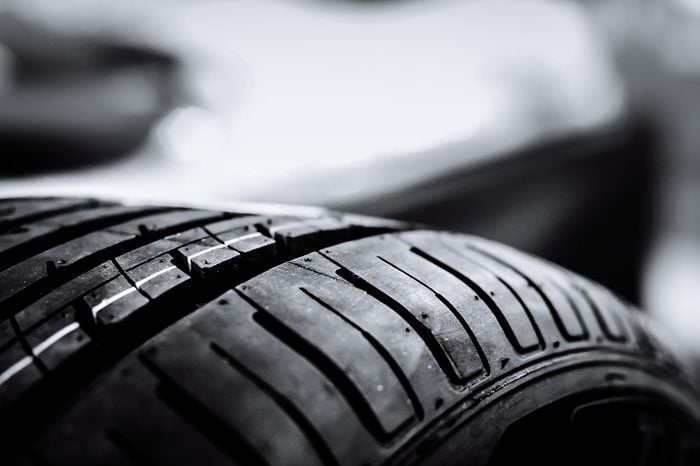
Not changing your tires
Driving in winter with regular tires can be a dangerous mistake, warn winter driving experts at both Chevy and BRAKES. Winter tires provide added traction in snow and ice, even for vehicles already equipped with four- or all-wheel drive. If you drive regularly in cold, harsh conditions, a set of winter tires may be a smart and safe investment because they use special rubber compounds that stay flexible in the cold, providing better grip and improved braking even in extreme weather.
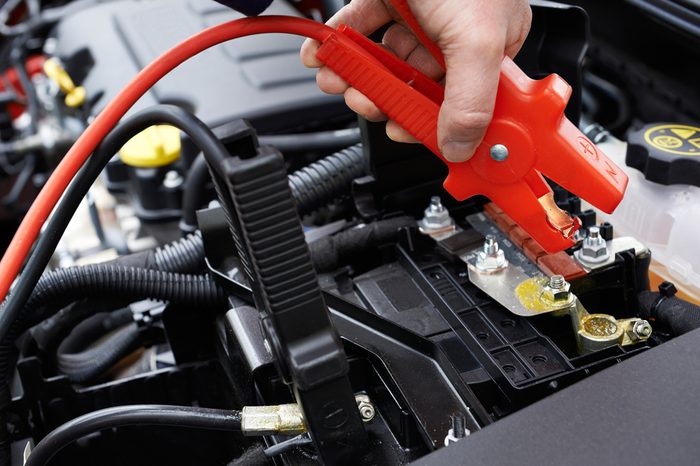
Driving without emergency supplies
In addition to carrying the standard snow brush and ice scraper, it’s a good idea to tuck a snow shovel and a container of cat litter in your car during the winter, agree Chevy and BRAKES experts. They also recommend you have jumper cables, flashlight, emergency flares, and a bright piece of clothing that can be seen in a storm—all of which can help you get to safety if you encounter unexpected problems—plus an extra set of cold-weather clothing, blankets, and spare phone chargers. Keeping some high-calorie, non-perishable snacks and bottled water in the trunk isn’t a bad idea either. Stay prepared with these other 17 items you should always keep in your car.
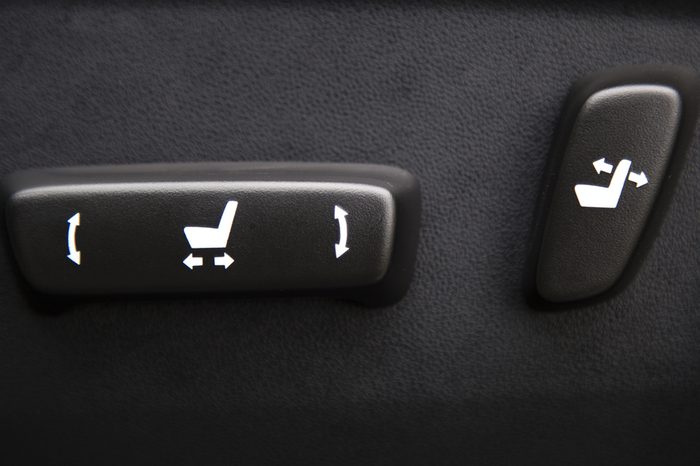
Sitting too low
When you must drive in winter weather, Chevy recommends raising your driver’s seat up higher. Sitting taller in your car or truck will provide better visibility of the road conditions and potentially dangerous obstacles that may be in front of and around your car.
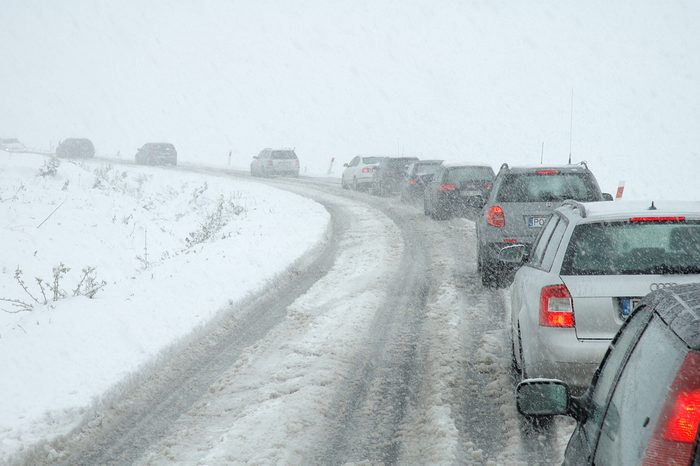
Giving up momentum
When going uphill in snowy conditions, even the slightest incline can lead to spinning out or worse. During a winter driving event in Connecticut, Chevy taught drivers to leave plenty of room between their own car and the vehicle ahead of them, emphasizing that it’s important to keep the momentum going while traveling uphill. Stopping in the middle of an incline may cause you to become stuck or start sliding backward.
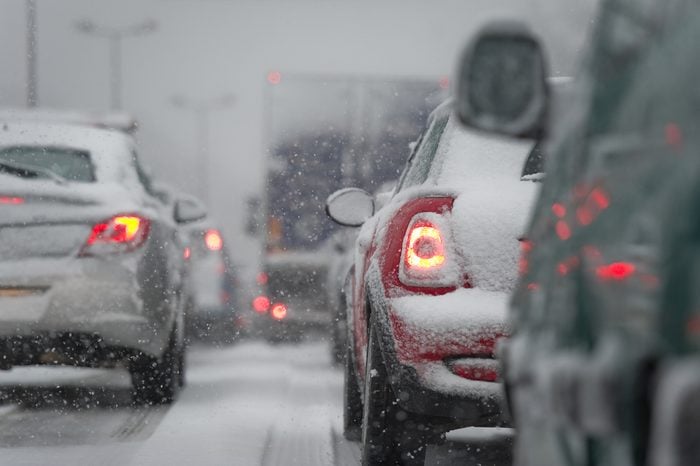
Unnecessary lanes changes
“Stay in your lane” isn’t obnoxious life advice, but rather another important winter driving lesson from Chevrolet. Unnecessary lane changes may cause your car to hit a patch of black ice or force you to plow through a strip of deep snow. Instead, stay safe by staying straight in your lane until you must turn off the road.
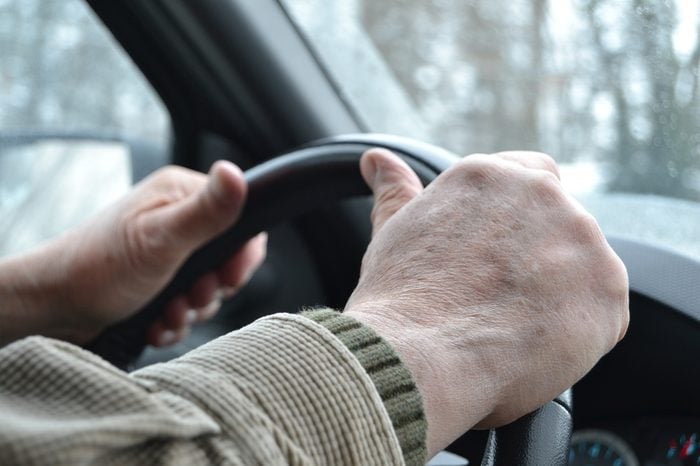
Giving in to panic
In the event that you find yourself in a skidding situation, the defensive driving instructors from BRAKES teach drivers to stay calm and maintain steady pressure on the brake. As long as your car has anti-lock brake system (ABS), it will automatically pump the brakes for you. Hold the brake pedal down and steer smoothing, looking in the direction you want the car to go. Make sure you know these 11 driving etiquette rules every driver should follow.
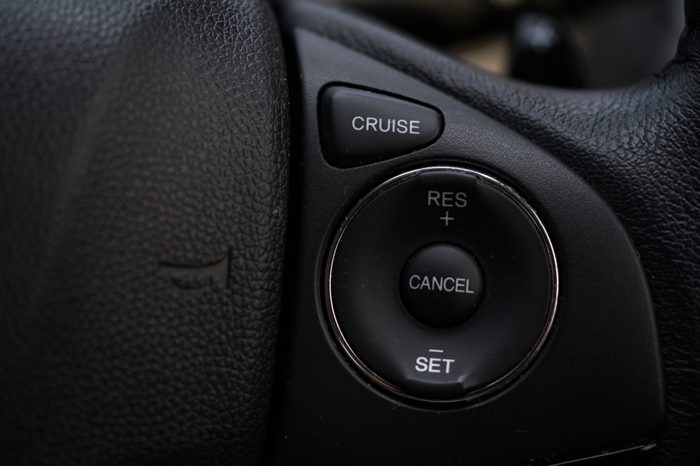
Continuing to use cruise control
You should never use your vehicle’s cruise control with slick road conditions, says Herbert. Your car’s cruise control doesn’t have a feel for loose road conditions and will often add more power at the wrong time, leading to a loss of control. Instead, retain full control of the gas pedal, brakes, and steering to ensure a safe drive during challenging winter weather conditions.
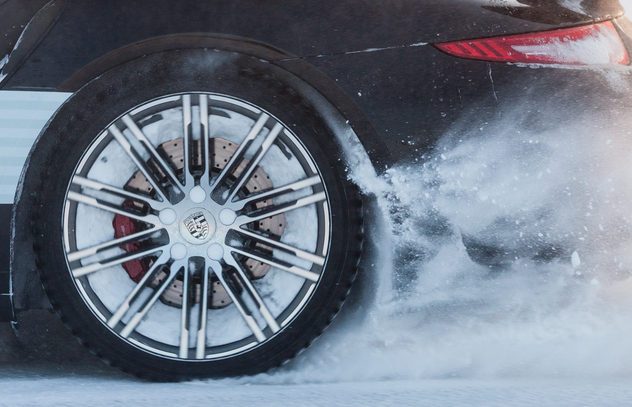
Trying to power your way out
Depending on your vehicle’s ground clearance and the snow conditions, the car can be rocked free. The ground clearance and 4×4 system of Chevy Silverado, for example, can help get you up and moving in deeper snow. Chevy recommends clearing the area around the front wheels and turning off any traction system your car may have. Then, gently shift back and forth between reverse and a low forward gear, spinning the wheels as little as possible. If your attempts to free your car are unsuccessful, don’t hesitate to call for help.
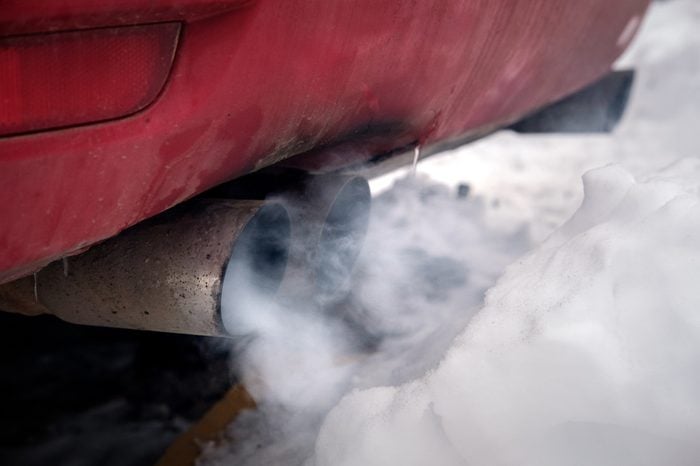
Running the car non-stop when stuck
Turn your engine on periodically to keep the interior of your car warm after clearing snow from the base of the vehicle, especially any snow that may be blocking the exhaust pipe. But don’t just let the engine run—you could run out of gas and potentially risk carbon monoxide poisoning. To help you get through, grab your warm blanket and open a window about two inches on the vehicle side away from the wind to bring in some fresh air. When you aren’t stuck, these are the states where it’s illegal to leave your car idling.
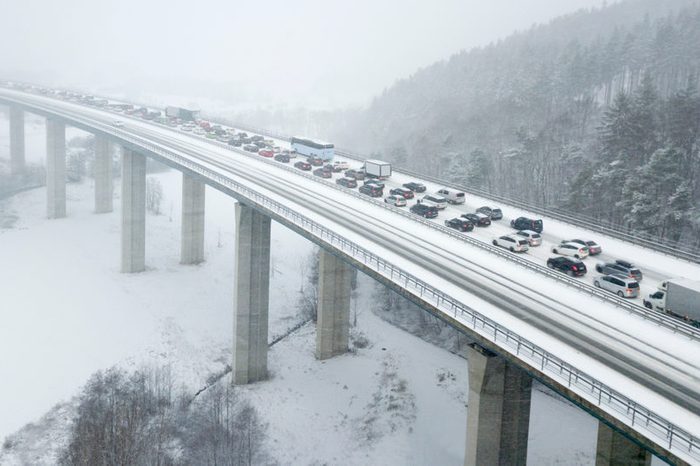
Passing on overpasses
We see the yellow signs, but rarely do we think about the potentially dangerous mistake of speeding on a bridge or overpass in winter. Part of the BRAKES defensive driving course teaches about weather’s impact on bridges and overpasses—that’s where icy conditions develop first because of the different exposure to air. Surface conditions can be worse on a bridge than on the approach road just before it, so expect less traction. Slow down before you reach all bridges and overpasses; lower speeds allow for better reaction time. Next, make sure you know these other car care tips you should use every winter.
